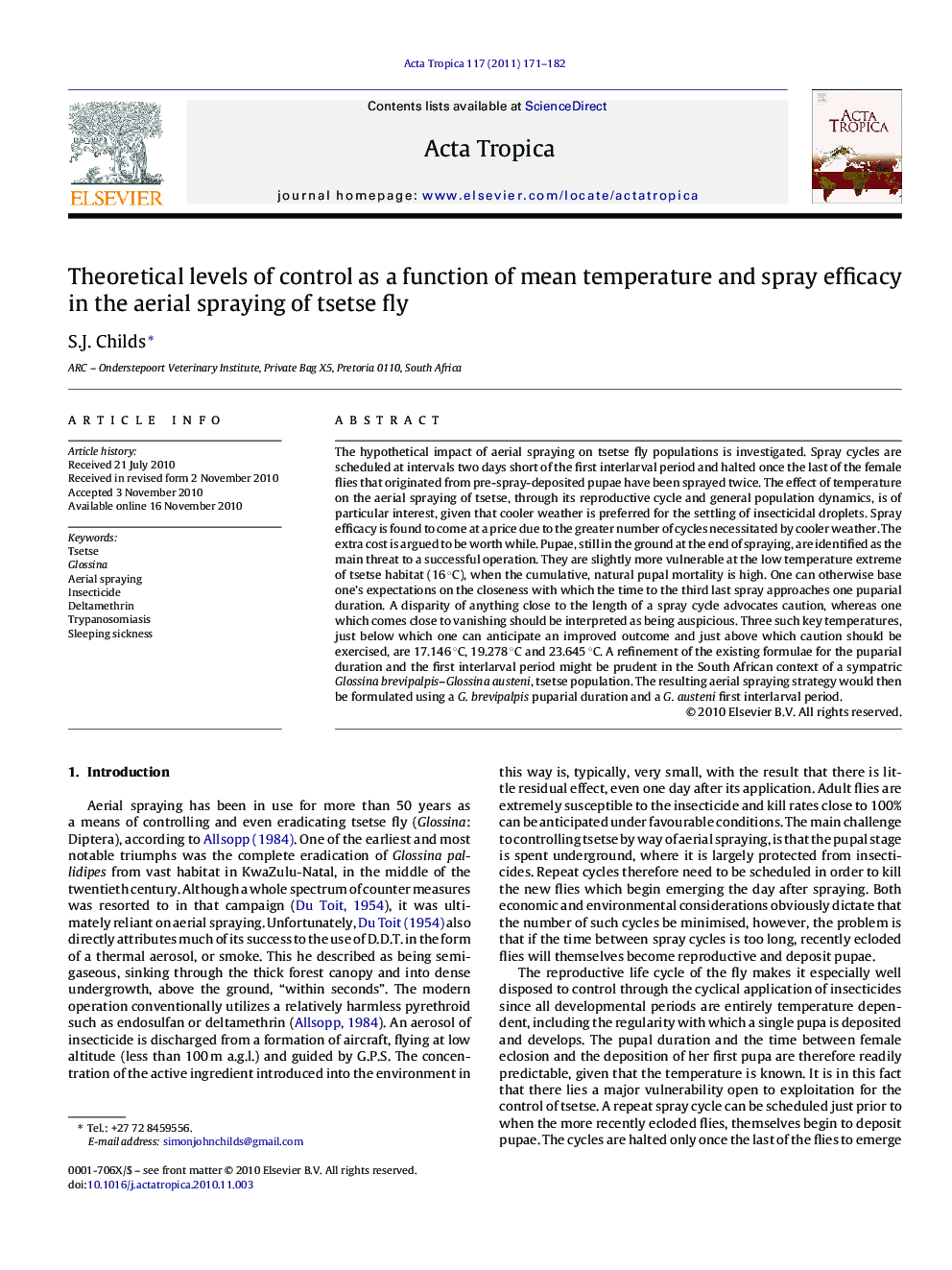| Article ID | Journal | Published Year | Pages | File Type |
|---|---|---|---|---|
| 6128364 | Acta Tropica | 2011 | 12 Pages |
Abstract
ⶠPupae, still in the ground at the end of spraying, are identified as the main threat to successful control by aerial spraying. They are, far-and-away, predominantly the immediate descendants of pre-spray-deposited pupae, which ecloded during spraying. ⶠThe constant-temperature formula for flies ecloding from such female pupae, ηγ2Nβâtâ£=Ï(sâ1)+1Ï(sâ1)+Ï0âi=0floortâ£âÏ0âÏ1â1/Ï2eâδ(Ï0+Ï1+iÏ2,T)Ï(floor{(tâ£âÏ0)/Ï}âfloor{(tâ£âÏ0âÏ1âiÏ2)/Ï})[1âH(tâ£â2Ï0âÏ1âiÏ2)]H(tâ£âÏ0âÏ1), is a good approximation of the outcome of a spraying operation, given the kind of kill rates which can be expected. ⶠOne can base one's expectations on the closeness with which the time to the third-last spray cycle approaches one puparial duration. ⶠThree such key temperatures, just below which one can anticipate an improved outcome and just above which caution should be exercised, are 17.146 °C, 19.278 °C and 23.645 °C. ⶠA refinement of the existing formulae for the puparial duration and the first interlarval period might be prudent in the South African context of a sympatric Glossina brevipalpis-G. austeni, tsetse population.
Related Topics
Life Sciences
Immunology and Microbiology
Parasitology
Authors
S.J. Childs,
